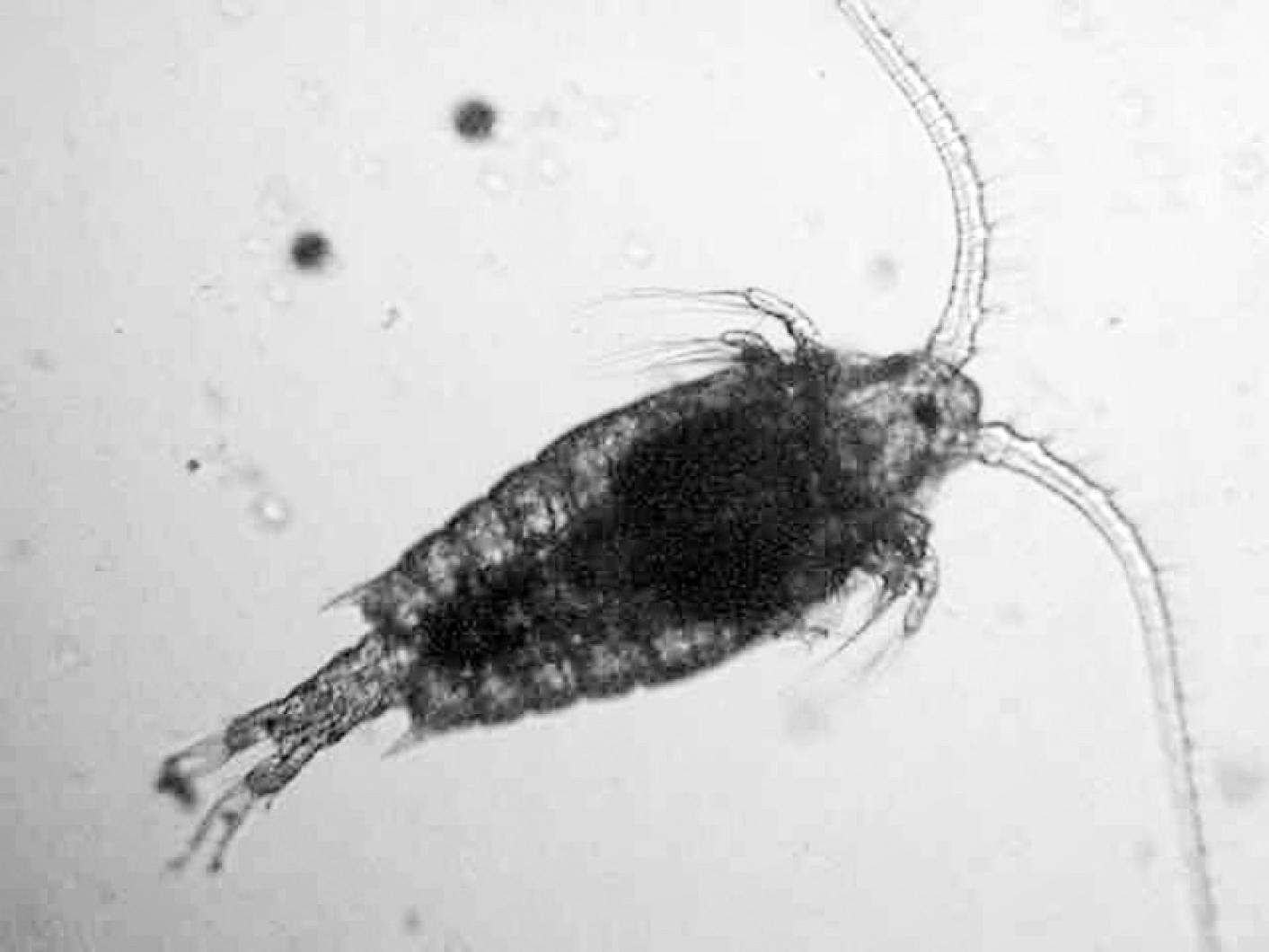In the ocean, size doesn’t always matter.
Bigger is better is not true if you are a copepod. Copepods live the idiom “small is beautiful.” They are crustaceans, usually only one or two millimeters or less, that play a giant role in the well being of the sea.
Often called the baby food of the ocean, copepods feed just about everyone, especially baby everyones since the young of many species consume them. And why not? Copepods are so plentiful that collectively they might be the largest biomass and single most abundant species on the earth! This rich biomass has been referred to as the plankton pasture of the sea.
Plankton is just a term for organisms that can’t swim against the current. Floaters like copepods qualify, as do diatoms, some jellyfish, other crustaceans, and the larvae of many other marine life forms. Two types of plankton include phytoplankton, or plant plankton, and zooplankton, or animal plankton, of which copepods are examples.
You have likely seen these little loafers. They can be found in most wet places, including the ocean, fresh water, wetlands, and even underground in watery caves and sinkholes. While there are over 13,000 known species of copepods, many of them can be similarly described as translucent, with a tear-shaped body and a large pair of antennae. They have an armored exoskeleton, and a single median bright red compound eye.
While life as a copepod may be adrift, don’t think for a minute that their lives are inconsequential. British businesswoman Anita Roddick knew the power of petite when she quipped, “If you think you’re too small to have an impact, try going to bed with a mosquito.”
The significant role of copepods is at least twofold, if not more. Being impressive eaters, copepods feed on both types of plankton, and a single copepod can consume up to 373,000 phytoplanktons per day.
The flip side of this is what goes in must come out. And it does, which is fortunately to our advantage, since copepod droppings play a vital role in sequestering carbon on the ocean floor. This carbon can be locked in and isolated for years, good news for all of us worried about carbon’s role in climate change.
Even more interesting, and the reason why these diminutive drifters are on my mind, is their role in the plight of right whales. Many of us have heard the bad news about the decline of the populations of these whales — and copepods may be playing an unintended role.
Copepods are a primary food source for right whales, which can filter and consume about 2,625 pounds (1.3 tons) of copepods per day. This feeding frenzy makes copepods a small but important collective cog in a big whale digestive machine.
Female whales bulk up on copepods before migrating south to give birth. Scientists believe that if there isn’t enough copepod biomass for the whales to consume, females may postpone or even forgo reproduction. And this delay is a problem for a species that can only breed every third year.
And in another climate-related effect, the warming of the water is changing the habitat of the copepods that the whales prefer. The masses of copepods are moving north and taking the whales with them, unfortunately into areas where the likelihood of entanglements and ship strikes are greater.
Perhaps the fate of the largest animal in the ocean might just depend on the smallest. As basketball coach John Wooden once noted, “It’s the little details that are vital. Little things make big things happen.”
Suzan Bellincampi is director of the Felix Neck Wildlife Sanctuary in Edgartown, and author of Martha’s Vineyard: A Field Guide to Island Nature.




Comments
Comment policy »